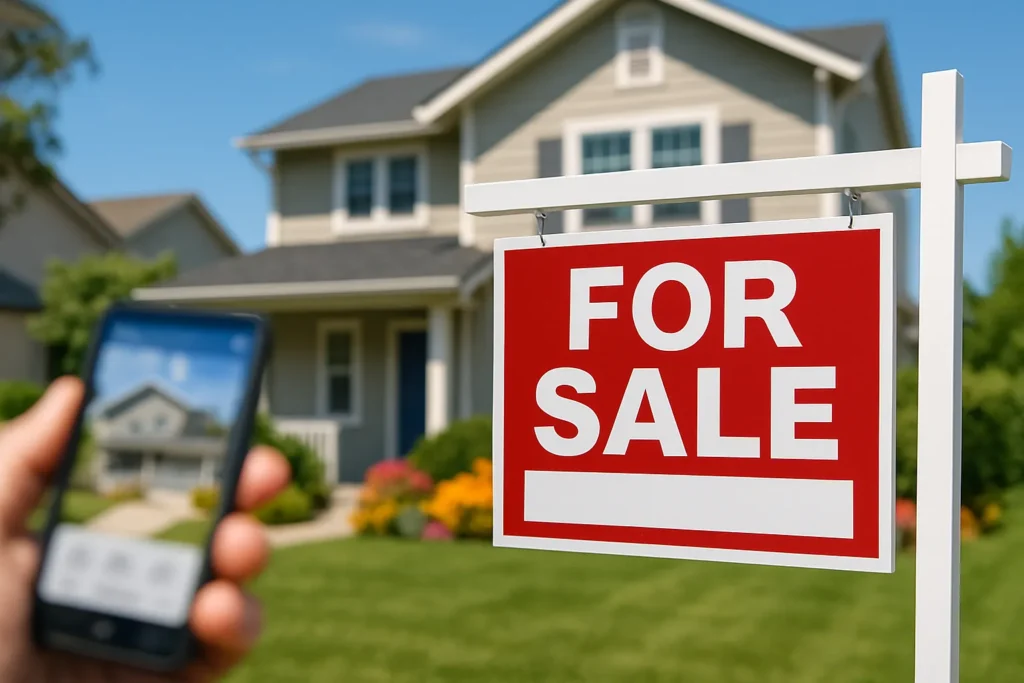The High-Water Mark: Record U.S. Home Prices
It’s a statistic that grabs your attention: the median American home now sells for a record-breaking $396,500. According to Redfin’s latest report, that’s up a modest 1% from just a year ago, but make no mistake—this new high-water mark belies a market in transition. House hunters are reeling as monthly mortgage payments sit at an average of $2,820, almost cresting their all-time record, while affordability steadily erodes.
The disconnect between the price on paper and what buyers will actually pay has never been clearer. Sellers are asking for a median of $422,238, but purchasers are negotiating, on average, a 6% discount—or $26,000 less. Why does this matter? It’s a vivid sign that the frenzied, fear-of-missing-out days of recent years are gone, and the leverage pendulum swings subtly toward the buyer, at least for now.
Yet, the cheerless truth remains: even with sellers relenting, the pool of eligible buyers continues to shrink. The National Association of Realtors reports that first-time buyers made up only 24% of home sales last year—a dramatic plunge from 50% in 2010. Today’s typical first-timer is nearly 40 years old. Imagine a generation burdened so fiercely by ballooning costs and stagnant wages that homeownership, once a rite of passage, now teeters on the brink of being a privilege.
Winners, Losers, and the Geography of Change
If you think the pain spreads evenly across the map, think again. In housing, location still rules destiny. Philadelphia’s homeowners are celebrating a 5.5% year-over-year increase in sale prices, a rare bright spot. Meanwhile, cities like Oakland, California, face the harshest realities—prices there plunged 5.9% over the same stretch. Florida’s once-hot metros, like Fort Lauderdale, are cooling fast, seeing pending sales tumble by more than 15%.
A closer look reveals another crucial trend: homes are sitting on the market longer. Properties now take, on average, five days more to sell compared to last year. That extra time is no accident. It’s a product of rising mortgage rates, unpredictable economic signals, and a glut of newly listed homes competing for a smaller and more cautious pool of shoppers.
New listings have climbed 4.4% year over year and total active listings surged by 14.5%, a level of supply not seen since before the pandemic. Despite this inventory spike, pending sales dropped 1.5%, and mortgage applications slid by 3%. Harvard’s Joint Center for Housing Studies highlights, “The housing market’s current dynamics are nothing short of historic—a collision of high prices, high borrowing costs, and shifting demographics is reshaping expectations and realities.”
When Negotiation Is No Longer a Luxury—It’s a Necessity
Buyers, pricey monthly budgets in hand, now have the upper hand—at least somewhat. Just 28.6% of homes now sell above list price, down from 32% last year. Sellers accepting reality are more open to negotiation, wary of stubbornly holding out as their listings linger. According to Redfin’s lead agent Kelly Connally, “Sellers need to ensure a home is both priced right and in top condition if they hope to avoid haircuts on closing day.”
Still, for millions, that’s cold comfort. The real source of this crisis lies deeper than mere numbers. Political choices—like the persistent refusal by conservative leadership to invest in affordable housing, or real constraints on mortgage relief programs—only compound the squeeze on working Americans. The wealth gap widens as a result: established owners see equity balloon, while renters—especially young families and people of color—find the ladder of upward mobility growing ever taller and harder to climb.
“In today’s America, a decent home is becoming a luxury commodity, not a basic family right.”
Some like Anthony Cervoni, a principal Redfin agent in Connecticut, note that select markets buck the trend. There, competition rages on amid tight supply, and buyers—perhaps with generational wealth and flexibility—continue to jostle for the best properties. Yet for the average working family, the climb remains steep.
What Will it Take to Make Housing Fair Again?
American housing policy demands a major reckoning. Decades of redlining, exclusionary zoning, and unequal investment have left deep scars—ones easily overlooked by policymakers intent on quick fixes. Market forces alone rarely solve such entrenched inequities. As Elizabeth Korver-Glenn, a University of Washington sociologist and housing equity expert, underscores: “These profound disparities are not just market inevitabilities—they’re the legacy of systematic decision-making.”
In today’s market, the very definition of the American Dream teeters on a razor’s edge. Families face monthly payments approaching $3,000, even as wage growth for most lags far behind. Pundits debate interest rates and price per square foot, but the real discussion must shift: Is the U.S. willing to prioritize housing as a public good, or leave it to a market that increasingly favors the already fortunate?
Progressive strategies offer hope. Cities experimenting with inclusionary zoning, robust affordable housing initiatives, and investment in community land trusts are showing early promise. The Biden administration’s focus on expanding the supply of entry-level homes and offering down-payment assistance for first-generation buyers could be transformative—if fully funded and implemented at scale. Still, these interventions face headwinds from conservative lawmakers who continue to prioritize deregulation and tax breaks for top earners over bold policies aimed at housing justice.
Which direction will America choose? For millions clawing for a foothold in an unforgiving market, that answer is more urgent than ever. As the richest country on earth, we have to ask: Who deserves a home, and what are we willing to sacrifice to make that promise real again?

